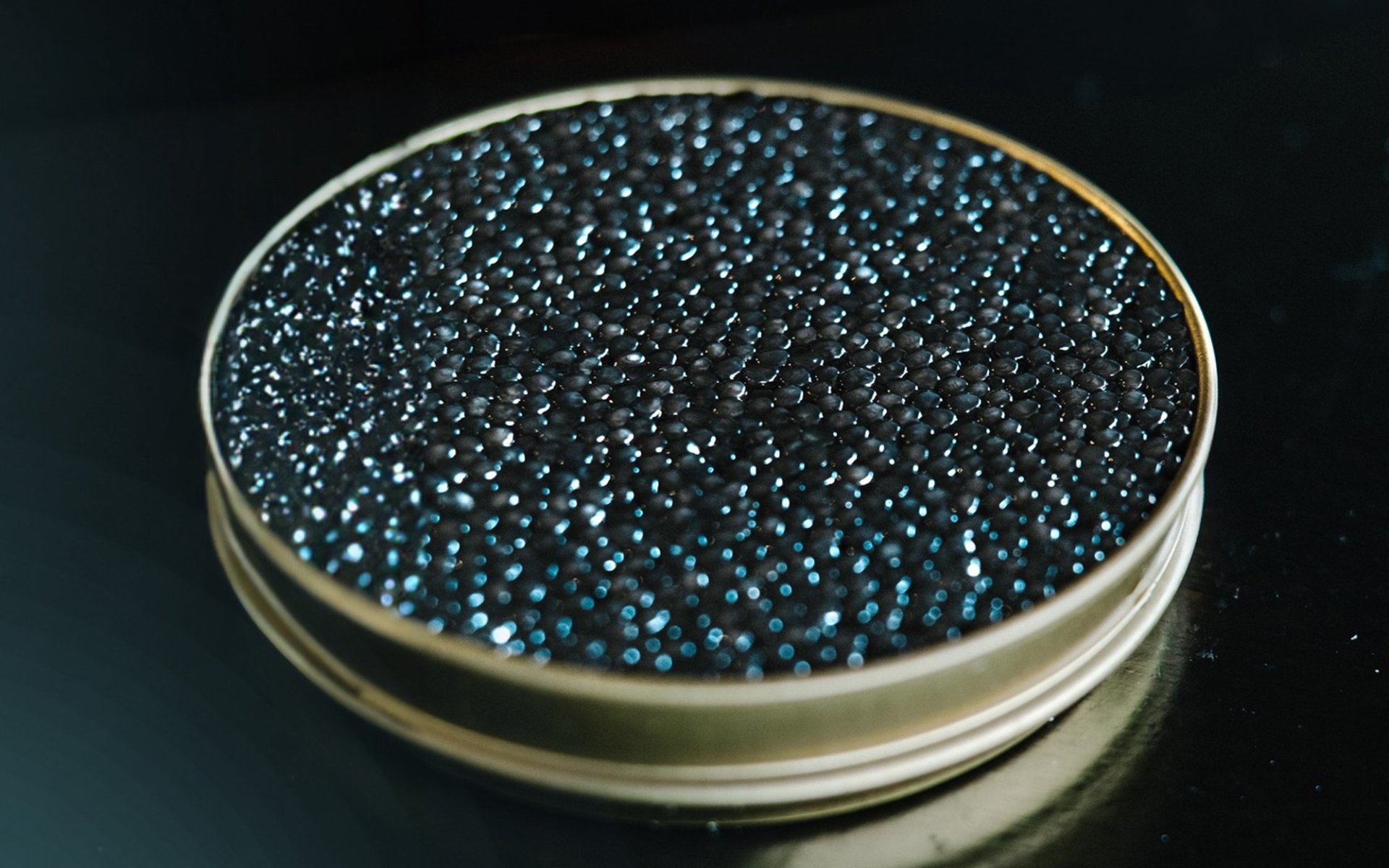Caviar

Beneath the tranquil waters of the Caspian and Black Seas, numerous sturgeon fish thrive. This species is said to be one of the oldest fish species on Earth, existing since prehistoric times, approximately 250 million years ago. These ancient fish are the source of the highly prized ingredient known as "caviar."
Among all sturgeon species, the Beluga is the largest and oldest, with an average length of 4 meters (13 feet) and weighing up to 1,000 kilograms (2,200 pounds). It produces approximately 20-25 percent of its body weight in eggs, which translates to about 200 kilograms (440 pounds) of caviar. This makes Beluga caviar the most expensive in the world today and highly sought after.
The Beginning: From Staple Food to a Belief in Strength
In ancient times, the Persians were among the first to catch and consume sturgeon. Initially, sturgeon was not caught for its roe but for its meat, like any other fish. It was only when fishermen observed the large quantity of roe in female sturgeon that they began to consume the eggs. They typically ate it with porridge or oatmeal, meaning that in its early days, sturgeon roe was a food for common people, not a luxury item for the elite.
The word Caviar, which refers to sturgeon roe, was coined by the ancient Persians, deriving from Khav-yar, meaning cake of strength or cake of power. This is because they believed sturgeon roe possessed numerous medicinal properties and could enhance physical vigor.
Caviar in Royalty: Towards a Symbol of Luxury
Over time, caviar began to be associated with Russian royalty, with records dating back to the 12th century. It is said that the Russian Tsars discovered this delicacy and introduced it to the world of luxury, making caviar a gourmet dish favored by Russian royalty and nobility within the court.
Soon, caviar was exported to the royal courts and high society across Europe. English history notes that King Edward II of England once issued a decree designating sturgeon as a Royal Fish, meaning that sturgeon was reserved exclusively for the monarch and the upper echelons of society, symbolizing control and high status.
In the 19th century, caviar from the Caspian Sea garnered international acclaim and was highly demanded in Europe. Most believed that Caspian caviar was of the highest quality, leading to annual trade volumes of between 2 to 4 billion dollars, reflecting its immense economic value.
Environmental Challenges: Conservation and Aquaculture
However, as the demand for caviar continuously increased, the sturgeon population drastically declined, pushing the species towards extinction. The price of caviar consequently skyrocketed. This led fishermen and stakeholders to prioritize the conservation of this fish. Stricter fishing restrictions and regulations were implemented, promoting sustainable caviar production. Support was given to the establishment of Sturgeon Farms, where fish could be raised in controlled environments, reducing pressure on wild populations. Additionally, efforts were made to preserve the natural habitats where the fish resided, a crucial approach to conserve natural resources.
Caviar in America: From Affordable to Luxurious
While European caviar was expensive, caviar in America was initially quite cheap. This was due to the abundance of sturgeon and other fish species in American waters. In fact, caviar was regularly served as a complimentary appetizer in American saloons, not considered a precious commodity at all.
In 1873, Henry Schacht, a German immigrant, established a caviar business in Penns Grove, New Jersey, USA, where sturgeon were plentiful in the Delaware River. He observed that caviar was highly sought after in Europe and began exporting it, quickly making America the world's largest caviar exporter. However, it was also rumored that American caviar was shipped to Europe for repackaging and then resold in America, falsely claimed to be Russian caviara marketing strategy prevalent at the time.
During this period, caviar gained immense popularity and was served as an appetizer in many high-end restaurants across America. But within a few decades, things changed dramatically. American sturgeon populations were nearly wiped out due to overfishing and habitat destruction. Consequently, production ceased, and caviar in America became a luxurious and expensive food, mirroring its status in Europe.
Caviar Today: The Black Gold of the Sea
Today, caviar remains an exceptionally expensive delicacy, a symbol of luxury, and is often dubbed the Black Gold of the Sea. We can enjoy caviar in various ways, from traditional pairings with Blini (small pancakes), Crème fraîche, Sour cream, Capers, finely chopped Egg white, and Shallot. In terms of beverages, caviar is said to pair exceptionally well with chilled Vodka and Champagne, enhancing the flavor and overall experience of consuming this exquisite delicacy.


